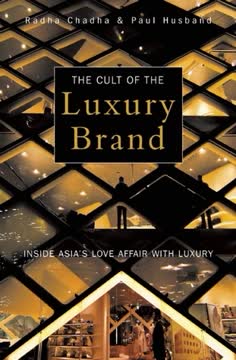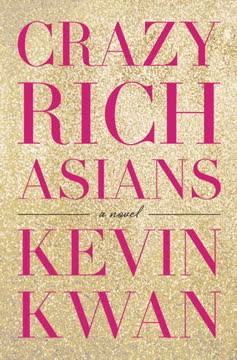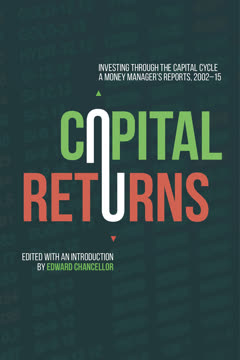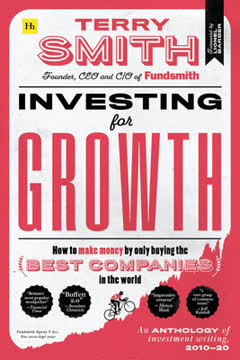Key Takeaways
1. Asia: The Global Epicenter of Luxury
More than half that business already comes from Asians, and the way the cult is snowballing – and Asian incomes rising – luxe is in for some hearty growth.
Unprecedented growth. Asia has rapidly transformed into the world's largest market for Western luxury brands, accounting for over 40% of global sales when including Asian tourist spending abroad. This phenomenal rise, particularly since the 1970s with Japan leading the charge, has reshaped the global luxury industry, making Asian consumers central to its success. Brands like Louis Vuitton, Gucci, and Rolex now depend heavily on this region for their revenue.
Economic boom fuels demand. The rapid economic development across Asia, from Japan's post-war resurgence to China and India's current full-throttle growth, has created vast new pools of wealth and a burgeoning middle class. This newfound prosperity, coupled with a desire for visible symbols of success, has driven millions of Asians to embrace luxury goods, turning what was once an exclusive European indulgence into a mass-market phenomenon across the continent.
Future growth engine. While Japan currently dominates with a sumo-sized 62% share of the Asian luxury market, emerging powerhouses like China and India are poised for explosive growth. China's luxury market, already significant at $2.5 billion, is projected to multiply several times over, with its outbound tourists alone spending over $1 billion annually on luxury goods. This makes Asia the undisputed present and future of the luxury industry.
2. Luxury as a New Social Currency
Luxury brands are a modern set of symbols that Asians are wearing to redefine their identity and social position.
Dismantling old orders. Massive political, social, and economic changes in Asia over the last 50 years have dismantled centuries-old ways of denoting social status, which were once defined by birth, caste, or profession. In this new social flux, financial wealth has become the primary criterion for social standing, creating a free-for-all where money dictates one's place on the ladder.
Visible markers of success. Western luxury brands, with their loud logos and unmistakable sign language, stepped into this void, providing a handy and universally understood tool for signaling financial prowess and social esteem. Carrying a Louis Vuitton handbag or flaunting a Rolex watch instantly communicates one's economic standing, allowing individuals to literally "wear their success" and navigate the new social hierarchy.
Identity and self-worth. For many Asians, luxury items are not mere indulgences but essential components of a new social protocol. Identity and self-worth are increasingly determined by the visible brands on one's person, replacing traditional markers of status. This has led to a new luxury-brand-defined class system, where one's spot on the social totem pole is marked by designer attire and accessories.
3. The Five Stages of Luxe Evolution
The interesting insight for marketers is just how fast the rule book can be written in an emerging market.
Predictable progression. The spread of luxury culture in Asian countries typically follows a five-stage process: Subjugation, Start of Money, Show Off, Fit In, and Way of Life. Japan, being the first to rise from post-war ashes, illustrates this model perfectly, moving from initial deprivation to becoming a luxury glutton.
From showing off to fitting in. In the "Show Off" stage, new money is announced through conspicuous display of wealth, often with clearly branded luxury goods. As prosperity spreads, the "Fit In" stage emerges, where luxury consumption becomes a social necessity to conform to new norms and avoid losing face. This collectivist drive accelerates adoption across wider segments of society.
Way of life. The final "Way of Life" stage sees luxury brands become deeply entrenched, almost indispensable. Once accustomed to the quality and status conferred by luxury goods, consumers find it nearly impossible to revert, even during economic downturns. This model helps predict market evolution, highlighting immense potential in countries like China and India as they progress through these stages.
4. Democratizing Desire: Luxury for the Masses
In today’s world the luxury goods consumer is characterized not necessarily by high net worth but by high disposable income…
Shifting consumer base. The 1990s saw a major shift in the European luxury industry, moving from traditional family businesses to global corporate machines with mass-market ambitions. This "democratization" of luxury opened doors to ordinary people, targeting younger and more mainstream consumers who possessed high disposable income rather than just high net worth.
Accessibility strategies. Luxury brands adopted several strategies to reach this broader consumer base, including:
- Logo-fication: Plastering instantly recognizable symbols on products, especially handbags, to serve as clear status signals.
- Lower price points: Offering entry-level products like wallets, cosmetics, and perfumes to make luxury accessible to "nibblers."
- Diffusion brands: Creating more affordably priced sub-brands (e.g., Armani Exchange) to cater to a wider audience.
Ubiquity and profitability. This strategic shift, coupled with the "malling of Asia" providing upscale retail infrastructure, allowed luxury brands to achieve massive scale and profitability. By making luxury "inescapable" and stretching their equity across a spectrum of products, companies successfully balanced exclusivity with widespread appeal, proving that having your cake and eating it too is indeed possible in the luxury business.
5. The Luxeplosion Formula: Engineering the Cult
Louis Vuitton is the godhead of the nation’s real state religion: the worship of brands.
Beyond traditional marketing. The luxury industry has developed a highly effective "showbuzz marketing" approach, combining showbiz glamour with professional buzz generation, to create a powerful cult following in Asia. This goes beyond traditional advertising, focusing on influencing key opinion leaders and generating organic excitement.
Cult tools and catalysts. The "Luxeplosion model" outlines this formula:
- Cult Tools: Social networkers (high-profile individuals with A-list connections), press collections (product samples for media), and strategic "spin" (excitement and educational stories).
- Cult Catalysts: Influential groups like celebrity parties, fashion/social editors, and VIP customers. These "super-infectors" are primed to endorse the brand, whether directly or indirectly.
Buzz and mass adoption. When these tools are applied to catalysts, they ignite a chain reaction, generating a full-scale media frenzy and becoming the "talk of the town." This buzz, consumed by a wider cross-section of society, leads to mass adoption. The brand's status is pumped up through association with high society and celebrities, leading to widespread desire and purchase, culminating in the creation of a powerful cult.
6. The Asian Psyche: Conformity, Face, and Aspiration
In today’s Asia you are what you wear.
Conformity as a driver. A powerful underlying force driving luxury consumption in Asia is the overwhelming need to conform to social norms, deeply imprinted in the collective psyche from childhood. If a social group dictates that certain luxury brands are essential, individuals feel immense pressure to acquire them to avoid ostracism or ridicule, even resorting to extreme measures.
The concept of "face." The Chinese concept of "face" (mien-tzu), referring to material prestige and the ostentatious display of wealth, plays a crucial role. Adorning oneself with visible symbols of success is not just for personal glory but for the greater glory of one's family, making luxury consumption a socially prescribed behavior. This contrasts with Western individualism, where personal preferences often outweigh social pressure.
"Instead of" syndrome. In densely populated Asian cities like Tokyo, where large homes and luxury cars are often impractical or prohibitively expensive, luxury brands become the primary means of communicating wealth and status. "Your coat is your home" aptly describes how personal adornment becomes the main canvas for displaying affluence, leading to voracious consumption of bags, shoes, watches, and jewelry.
7. The Unexpected Role of "Genuine Fakes"
To be counterfeited is a symptom of success, certainly. If we weren’t copied and counterfeited it would mean that the Prada and Miu Miu labels weren’t desirable.
A multi-billion dollar shadow. The success of luxury brands has inadvertently spawned a massive global "fake" industry, estimated at $27 billion annually. While cheap rip-offs still exist, the worrying trend is the rise of "genuine fakes" – near-perfect clones whose quality is so high they appeal even to the wealthy, leading to significant loss of legitimate sales.
Guilt-free consumption. In many Asian cultures, buying counterfeit products is not perceived as illegal or morally wrong. This "guilt-free" attitude, coupled with the desire for status symbols at a fraction of the cost, fuels widespread fake consumption. Countries like South Korea and China are renowned for producing high-quality fakes, with "made in Korea" being the equivalent of "made in France" in the counterfeit world.
Fakes as a "trial pack." Paradoxically, fakes have played an unexpected role in spreading the luxury cult. They act as a "trial pack," introducing millions to the allure of luxury brands. As consumers' economic status and taste mature, many who started with fakes eventually upgrade to genuine articles, becoming loyal customers. This suggests an uneasy equilibrium where fakes, while problematic, can also serve as a gateway to the real thing.
8. The Rise of the Asian Metrosexual
If men shop like women, the men’s market can potentially be as big as the women’s – maybe even bigger, given that men tend to have a lot more money on hand.
Reactivating the peacock gene. The Asian male, traditionally less inclined towards overt fashion expression than his Western counterpart, is rapidly embracing metrosexuality. This shift is driven by rising prosperity, the emergence of vibrant urban cultures, and a natural inclination towards physical adornment that predates Western influence.
Beyond traditional roles. Asian men are increasingly taking charge of their personal styling and grooming, moving beyond the confines of conservative business attire. This "men's liberation movement" sees them adopting "stylish casual" looks, investing heavily in designer clothes, bags, shoes, and watches, and frequenting men's beauty salons and spas.
Significant market potential. This trend presents a huge opportunity for luxury brands. With men often having more disposable income, their market could potentially rival or even surpass that of women. Brands like Dior Homme, with its focus on new shapes and silhouettes for men, are keenly tapping into this evolving segment, recognizing the Asian metrosexual as a powerful future consumer.
9. Super-Élitism and Niche Luxury
The Asian consumer comes to luxury more recently. Almost anything goes today… as markets evolve, as markets mature, they will become more discriminating and the market will become more segmented.
Beyond mass luxury. As the luxury cult expands and more Asians gain access to designer brands, the very definition of luxury will evolve. The current "democratization" of luxury, characterized by widespread availability and recognizable logos, will lead to a counter-trend: the "super-élitization of luxury."
Quest for true exclusivity. This shift will see élite consumers seeking to distance themselves from the mass market by gravitating towards extremely high-priced, handcrafted, and limited-edition pieces. The focus will move from loud logos to exceptional quality, artisanal merit, and unprecedented levels of customization, potentially reviving haute couture in markets like China and India.
Diversification of taste. As Asian new money matures, status anxiety will give way to greater confidence and individualism. This will foster a more discerning market with a multitude of niche brands and unique products, chosen based on personal taste rather than blind adherence to trends. Luxury retailing will adapt, offering intimate settings and the thrill of discovery to cater to these sophisticated consumers.
10. The Future is Asian-Made and Asian-Led
If the 20th century belonged to America, the 21st surely belongs to Asia.
Shifting production landscape. Despite the strong association of luxury with European heritage and craftsmanship, there's a quiet but steady trend of luxury brands moving production to low-cost Asian countries. While "made in Europe" labels are still preferred, particularly in Asia, the economic realities of lower labor costs and faster time-to-market are driving this shift.
Asia's rising influence. Just as Italy evolved from a manufacturing hub to a fashion capital, Asia, particularly China, is poised to produce its own world-class luxury brands and designers. The increasing cultural impact of Asia, coupled with its economic ascendancy, will lead to a resurgence of local pride and a reinterpretation of traditional aesthetics for modern times.
A new global order. The 21st century will see Asia not just as the largest consumer of luxury, but also as a significant force in its creation and production. This will challenge existing perceptions of luxury, leading to a more diverse and globally integrated industry where Asian design sensibilities and manufacturing prowess play an increasingly central role.
Last updated:
Review Summary
The Cult of the Luxury Brand receives mixed reviews. Some praise its insights into Asian consumer psychology and luxury brand marketing, finding it useful for understanding cultural contexts. Others criticize it for lacking thorough research, relying on generalizations, and being overly materialistic. The book explores luxury consumption patterns across Asian countries, linking them to stages of economic development. While some readers find it engaging and informative, others view it as an extended advertisement for luxury brands. Despite its age, many still consider it relevant for understanding Asian consumer behavior.
Similar Books
Download PDF
Download EPUB
.epub digital book format is ideal for reading ebooks on phones, tablets, and e-readers.









